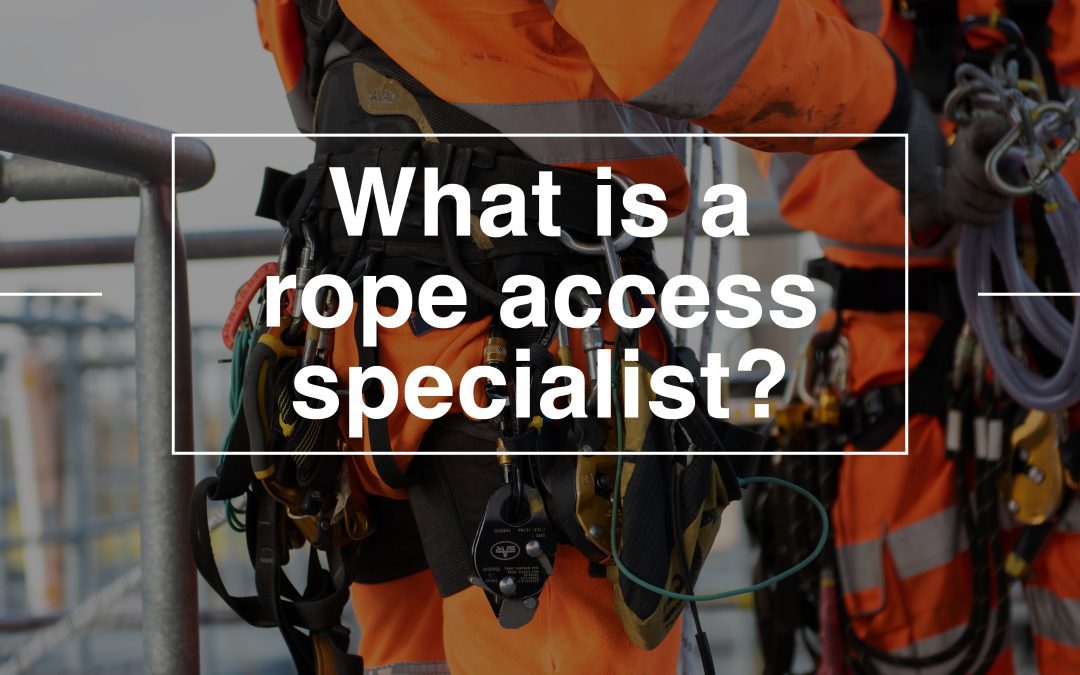Ever fancied a job with plenty of exciting challenges and an office with an amazing view? Then becoming a rope access specialist could be the right career for you. Rope access in the UK is becoming the go-to specialism for maintenance, inspection, cleaning and much more. And it’s a great way to grab some awesome selfies.
So if you’re comfortable with heights and enjoy abseiling or climbing, becoming a rope access technician can be a highly rewarding way to earn a living. But what exactly is a rope access specialist, and how can you get started in industrial abseiling?
What is a rope access specialist?
Rope access specialists carry out work at height using a rope rather than scaffolding, so you’ll need to feel confident and safe using a rope and harness. It’s a way to have greater freedom of movement to reach inaccessible places. And you’ll master techniques that are commonly used in climbing, caving or abseiling.
If you’re looking for a job that gives you plenty of freedom, gets you outdoors and gives you the opportunity to work on some iconic buildings from football stadiums to skyscrapers, rope access could be for you.
What does a rope access specialist do?
As rope access technicians, we tackle a vast range of jobs. From building maintenance and construction to rigging work for Film and TV, rope access is suitable for any work carried out at height – so you could be silo cleaning one day, painting another, and on the set of a blockbuster after that.
It’s also worth remembering that rope access training gives you the skills to work safely and comfortably at height. And the sky really is the limit with industrial abseiling when it comes to enjoying a varied work life.
What training do rope access specialists need?
Our rope access technicians undergo IRATA training, which is why industrial abseiling is one of the safest jobs around. However, if you want to specialise in painting, maintenance or other trades, you’re better off training in those areas first.
IRATA training consists of three levels:
- Level 1 training covers the basics, including equipment inspection and rigging, basic manoeuvres and rescue techniques.
- Level 2 training is the next step and can be undertaken once you’ve logged 1,000 hours of rope access experience. You can progress your skills to the next level by learning more advanced rigging and rescue techniques. You’ll also get additional safety training and need to know about relevant safety and quality assurance legislation.
- Level 3 training allows you to become a qualified instructor, but you’ll need to log another 1,000 hours on the ropes. You’ll learn advanced techniques and focus on health and safety legislation. You’ll also help to train and supervise level 1 trainees.
Why you need rope access specialists
Highly skilled rope access technicians are a great choice for work at height when time and money are precious. We carry our own rigging equipment and can get set up in a fraction of the time needed to erect scaffolding. It takes a smaller workforce to do the job, and we can get to places you didn’t even know existed for ultimate peace of mind.
If cost-effective and flexible accessibility is the right fit for your business needs, then rope access in the UK gets the job done with maximum effectiveness and minimum fuss.
Rope Access with Think Access
At Think Access, we’re highly trained specialists who can get the job done, whatever the height. We can provide permanent and temporary access, plus UAV solutions, and we work smart, not hard, through the unique Konnect system. To find out more about rope access for your business, contact us today.

